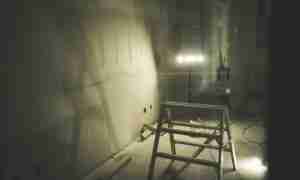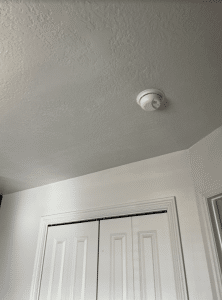When it comes to drywall, precision is key. At Utah Drywall & Repair, we’ve noticed many homeowners struggle with achieving perfect drywall cuts. This not only wastes time and materials but also creates a lot of frustration. That’s why we’ve crafted this comprehensive guide to help you make flawless cuts and take your drywall skills to the next level.
Contents
Understanding the Tools
Having the right tools is the first step towards mastering drywall cutting. You’ll need a utility knife, drywall saw, T-square, and measuring Tape. Each of these plays an essential role in ensuring precise cuts. Make sure your tools are in good condition before you begin. Worn-out blades or faulty equipment can lead to mistakes, and nobody wants that.
Additionally, using the appropriate tool for each type of cut is crucial. While a utility knife works wonders for scoring, a drywall saw is ideal for making openings or larger cuts. Knowing which tool to use and when can save you time and headaches down the road.
Measuring: The Heart of Precision
Precision drywall cutting is heavily dependent on accurate measurements. Start by measuring the area where the drywall will be installed. Use a measuring tape and a pencil to mark the dimensions accurately. Then, transfer these measurements to the drywall sheet using a T-square for straight lines.
It’s important to double-check your marks before making any cuts. Even the smallest error can ruin the entire sheet. Remember, it’s better to measure twice and cut once. This age-old advice holds true in drywall works as much as anywhere else.
Marking the Drywall
Before diving into the cuts, marking the drywall correctly is paramount. Use a pencil to visibly outline your measurements on the sheet. The T-square will help ensure the lines are straight and true. Using a light touch with the pencil avoids indenting the drywall paper, which can be a problem later when Painting.
In situations where intricate shapes or curves are needed, consider the area carefully before marking. Drafting a template or a guide can be beneficial, especially for non-standard cuts.
Scoring and Snap Technique
The scoring and snap technique is often your go-to method for straight cuts. Use a utility knife to score along your marked line. Apply firm and even pressure to ensure a clean score. Then, hold the scored line firmly and snap the drywall along it, giving you a clean edge.
This method minimizes dust and ensures a smooth edge, reducing the need for excessive Sanding. Remember, safety is always a priority. Use gloves and eyewear to protect yourself from sharp edges and debris.
Cutting Openings for Fixtures
When it comes to cutting openings for fixtures such as outlets and light switches, precision cannot be overstated. Here’s a quick list to guide you through this:
- Map the Area: Begin by mapping out the location and dimensions of the opening you need. Use a pencil to draw the outline on your drywall.
- Select the Right Tool: Depending on the shape and size, choose between a utility knife or a drywall saw. Each tool has its strengths for different cuts.
- Perfect the Cut: Start at one corner and work your way around. It might take a few strokes to go through entirely, especially with thicker drywall.
- Test the Fit: Once the cut is finished, test-fit the drywall to ensure everything aligns perfectly with your fixture. Adjust your cuts if necessary for a snug fit.
- Smooth the Edges: Use sandpaper to smooth out any rough edges, ensuring a professional finish.
Dealing with Curved Cuts
Sometimes, straight lines just won’t do the trick. If your wall requires a curve, things can get tricky. Use a template or compass for marking desired curves on the drywall.
If the curve is gentle, a drywall saw should suffice to make the cut. For more intricate curves, a keyhole saw or rotary cutting tool might be necessary. These specialized tools give you better control and precision over complex shapes.
Sanding for a Smooth Finish
After cutting, lightly sand the edges to ensure they’re smooth. Begin with medium-grit sandpaper to eliminate the roughest edges, then switch to fine-grit for finishing. A smooth edge is crucial for a tight joint and neat finish when Taping and Mudding the seams.
By taking your time with this step, you’ll reduce the risk of bumps showing through the paint. Remember, a well-executed drywall job is only as strong as its weakest joint.
Understanding the Common Mistakes
Even experienced DIYers can make mistakes in drywall cutting. The most common issues include cutting too much off or not accounting for fixture placement. Avoid these by always reviewing your plans and measurements before making cuts.
Another common error is neglecting to account for the thickness of the mud and tape when installing drywall. This little oversight can lead to finished pieces not aligning correctly. Stay ahead by factoring these additional elements into your overall plan.
The Importance of Practice
Like with any skill, practice makes perfect. Take some time to work on practice sheets before tackling your main projects. This will give you the confidence and experience needed to execute your cuts flawlessly.
Also, consider consulting online tutorials or taking a class if you’re a hands-on learner. There’s a wealth of knowledge available, and each tip or trick you pick up contributes to better results.
Conclusion
For impeccable drywall cuts, practice and preparation are key. Follow this guide and reap the benefits of smoother projects. For further assistance or more tips, feel free to reach out to Utah Drywall & Repair by phone 801-406-6350 or Request a Free Quote.




